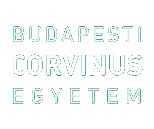Virág, Ágnes (2023) „Wild Democracy” – The figurative conceptualization of the Parliament in Hungarian editorial cartoons (1989 – 2019). Doktori (PhD) értekezés, Budapesti Corvinus Egyetem, Szociológia és Kommunikációtudomány Doktori Iskola. DOI https://doi.org/10.14267/phd.2023008
Teljes szöveg
|
PDF : (dissertation)
11MB | |
|
PDF : (draft in English)
419kB | |
|
PDF : (az értekezés tézisei magyar nyelven)
428kB |
Kivonat, rövid leírás
The expression of the Parliament is often associated with abstract concepts such as politics, democracy, or nationhood (Kapitány & Kapitány, 2002; Szabó & Oross, 2018) when instead of the literal meaning of the ‘building’, we refer to its figurative meanings. It has already been confirmed that political cartoons are rich in figurative devices (e.g., conceptual metaphor) (i.a. El Refaie, 2009) and they serve as a suitable corpus for the investigation of the figurative meaning of the Parliament. In the case of a conceptual metaphor, for instance, the Parliament (considered as a target domain) is understood via the source domain conceptually different from the target (e.g., COLOSSEUM). In that way, certain characteristic features of the source domain are mapped onto the target domain, and we are able to interpret politics, specifically the Parliament itself as the site of real, dangerous, life-or-death physical battles. All these figurative meanings can influence how we think about politics, its processes, and actors, how we argue in the case of a political problem and how we would try to solve it. The current research aims to examine how the Hungarian Parliament is visually represented in editorial cartoons and how these visual representations – through figurative conceptual devices such as conceptual metaphors and conceptual metonymies – construct the concept of the parliament. Furthermore, the thesis discusses how these cognitive devices cooperate with ironies and cultural references (such as idioms, allusions, and national symbols) which are determinant in evaluation procedures and the creation of emotional bonds between the viewer and the cartoon. In doing so, the dissertation studies the caricaturistic representations of the Parliament in three various periods (Körösényi, 2015); thus, the investigation is longitudinal (describing thirty years since 1989) and comparative. What are the novelties of the research? First, it examines Hungarian editorial cartoons in a cognitive linguistic framework, unlike this, so far Hungarian political cartoons have been discussed by historians (e.g., Tamás, 2014). Second, although the Parliament is an important concept (Kapitány & Kapitány, 2002), its figurative meaning has not been studied so widely yet. Third, it is a multimodal investigation of conceptual processes that fits into the trend of cognitive linguistic research that focuses on the cooperation of different processes. Fourth, this research examines a large data set in context where the contextual factors are limited to three types, namely idioms, allusions, and national symbols (context types are usually not defined in such concrete ways, e.g., Charteris-Black, 2011). Fifth, the dissertation applies Extended Conceptual Metaphor Theory (ECMT) (Kövecses, 2020) in practice in a larger corpus. Sixth, it is a diachronic investigation which is rare in the field of cartoon research (e.g., Frantzich, 2013) also in cognitive research, especially in multimodal research. The main results show that 1) the representation of the Parliament is strongly linked to such conceptual procedures as conceptual metonymy and conceptual metaphor. These cognitive devices are likely to cooperate with ironies and cultural references. 2) a limited number of cognitive devices (e.g., the conceptual metonymy THE PARLIAMENT STANDS FOR THE GOVERNMENT, or the conceptual metaphor THE PARLIAMENT IS A PLACE FOR PHYSICAL CONFLICT) are recurring in the corpus during the period between 1989 and 2019. However, regarding the perspectivization, content and function of these cognitive devices, it is said that the compared periods of democracy (Körösényi, 2015) show significant differences based on the diverse preferences and distribution of the cognitive devices with specific cultural references in each era. 3) the increase of more aggressive scenes emerges from the metaphoric domain of PHYSICAL CONFLICT, which goes hand in hand with a change in the use of national symbols referring to the perceived extreme nationalist content, and political slogans which are dominated by the direct elements (literal citations, showing violence overtly). An unexpected result is the detection of a shift in communication acting in the opposite direction, according to which in linguistic changes indirect processes took place (e.g., increasing use of causal type ironies), in visual processes direct changes became predominant, so for instance, violence appeared literally. In sum, the Parliament seems a permanent phenomenon throughout the years, however, this research points to its different meanings and nuances of meaning variants. So even the stability of the meaning of such a strong national symbol can be questioned.
| Tétel típusa: | Disszertáció (Doktori (PhD) értekezés) |
|---|---|
| Témavezető: | Benczes Réka |
| Tárgy: | Média és kommunikáció Szociológia |
| Azonosító kód: | 1278 |
| Védés dátuma: | 6 március 2023 |
| DOI: | https://doi.org/10.14267/phd.2023008 |
| Elhelyezés dátuma: | 31 Jan 2023 07:43 |
| Last Modified: | 14 Mar 2023 14:01 |
Csak a repozitórium munkatársainak: tétel módosító lap

 Letöltési statisztika
Letöltési statisztika Letöltési statisztika
Letöltési statisztika